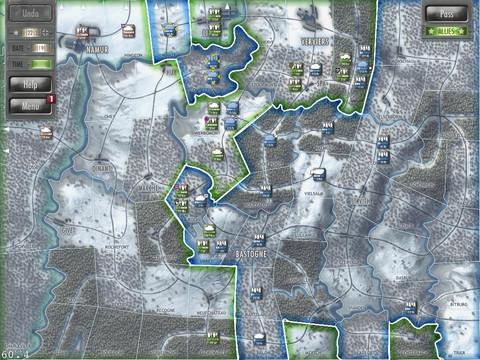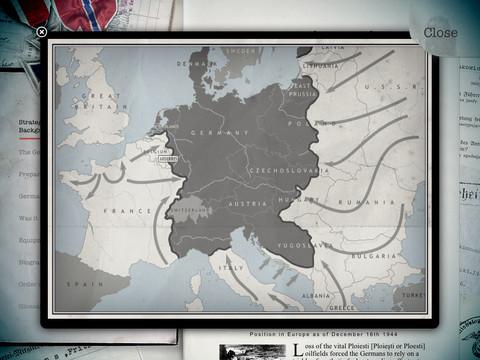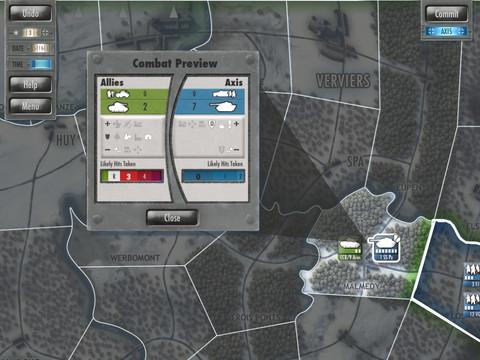- Wondering how to get Monopoly GO! free rolls? Well, you’ve come to the right place. In this guide, we provide you with a bunch of tips and tricks to get some free rolls for the hit new mobile game. We’ll …
Best Roblox Horror Games to Play Right Now – Updated Weekly
By Adele Wilson
Our Best Roblox Horror Games guide features the scariest and most creative experiences to play right now on the platform!The BEST Roblox Games of The Week – Games You Need To Play!
By Sho Roberts
Our feature shares our pick for the Best Roblox Games of the week! With our feature, we guarantee you'll find something new to play!Type Soul Clan Rarity Guide – All Legendary And Common Clans Listed!
By Nathan Ball
Wondering what your odds of rolling a particular Clan are? Wonder no more, with my handy Type Soul Clan Rarity guide.
Battle of the Bulge Review
In December 1944, the German army made one last-ditch assault against the Allied armies as they advanced into the bitter, icy woods of Belgium. Now seen as a futile, tragic waste, the resulting battles in the snow saw tales of heroism and desperation that captured the imagination of a generation of war games. The latest title to join the throng is Battle of the Bulge, a rare historical game designed specifically for the iPad.

Bulging with quality
In December 1944, the German army made one last-ditch assault against the Allied armies as they advanced into the bitter, icy woods of Belgium. Now seen as a futile, tragic waste, the resulting battles in the snow saw tales of heroism and desperation that captured the imagination of a generation of war gamers. The latest title to revisit this front is Battle of the Bulge, a rare historical game designed specifically for the iPad.
The game is a map-based strategy affair in which the sides take turns to activate one area and move the units within. The mechanics of battle resolution are deliberately obscured, the players only being offered a breakdown of likely outcomes before deciding to commit to the fight or try something else. The game features simple supply and artillery rules with slightly more complex procedures for terrain and movement to distinguish armour from infantry. There’s also a neat variable time mechanic which occasionally ends the turn before an incautious player has finished moving.
Historical simulations of this kind have an oft-deserved reputation for complexity, a barrier to those unfamiliar with the genre. Aware of this, the designers of Battle of the Bulge have tried to keep things simple. First launch offers a brief overview of play. You can then dive right in or play a tutorial. Each new day offers the player an overview of the game state and objectives. And there are both summarised and complete texts of the game rules available, which demonstrate the game is not excessively complex.
This staggers the details so that you can slide slowly into the game and get to grips with its intricacies. But be warned: if you want to win, you’ll at some point need to read all the rules. The AI on offer is fairly tough, and while it comes in with a choice of personalities which favour particular tactics, you have no control over its ability level. You’ll need to fully understand the game to beat it, let alone competent human opponents via the excellent online or hotseat multiplayer interfaces.
But once you’ve broken that barrier, a game of considerable majesty awaits you on the other side. From the beginning it needles you with agonising strategic conundrums, and never lets up. You must constantly balance attack and defence, the scenario objectives and your supply routes and the potential for enemy action to disrupt your plans. The uncertain outcome in battle gnaws at you like a canker, adding to the tension. It’s rarely less than utterly enthralling.
You’re pushed further into the war-torn Belgium of seventy years ago by the superb presentation. The fine map art is evocative of the winter woodlands over which the fighting took place, and the stylised unit icons stand out proudly against it. For the most part it combines beauty with clarity, although there’s a slight issue with the blue boundaries of German spaces obscuring rivers. The game shuns pompous martial music during play in favour of a sparse, eerie soundtrack of chill winds, mechanical groans and haunting snatches of period radio.
The hugely atmospheric presentation and engrossing gameplay combine to put the player squarely into the battlefield, close enough to hear the crunch of tank tracks on the ice. The absorption isn’t even broken by the intrusion of buttons and menus, which are styled to look like military briefings, and highly usable. In a nice touch your daily dispatches include some historical background to pore over, for those interested.
The historicity of the game itself is slightly suspect. The requirement to activate one area at a time feels a slightly artificial way to force the player into additional awkward strategy decisions. The historically vital town of Bastogne seems too easily ignored. But all historical simulations have to make small sacrifices in the name of playability, and the depth and excitement on offer here are easily worth the trade.
The need to roughly approximate history can drive war games into tactical straitjackets where repeating the actual plans used is the only route to victory. Not so here. There’s a choice of long or short scenarios, with different objectives that make them feel distinct despite starting from the same positions. The longer game has a variety of ways to earn victory points and a resulting variety of strategic approaches. The asymmetric sides add to replay value.
Translating board games onto iOS is a popular route, but one filled with pitfalls. The decision by the team behind Battle of the Bulge to start with board game mechanics but implement them specifically for the platform has paid off handsomely. The result is an outstanding title that makes full use of its digital capabilities to smooth over complexity, deliver top-notch multimedia presentation and make an approachable-yet-compelling strategy game.

The good

The bad
More articles...
Monopoly GO! Free Rolls – Links For Free Dice
By Glen Fox
Wondering how to get Monopoly GO! free rolls? Well, you’ve come to the right place. In this guide, we provide you with a bunch of tips and tricks to get some free rolls for the hit new mobile game. We’ll …Best Roblox Horror Games to Play Right Now – Updated Weekly
By Adele Wilson
Our Best Roblox Horror Games guide features the scariest and most creative experiences to play right now on the platform!The BEST Roblox Games of The Week – Games You Need To Play!
By Sho Roberts
Our feature shares our pick for the Best Roblox Games of the week! With our feature, we guarantee you'll find something new to play!Type Soul Clan Rarity Guide – All Legendary And Common Clans Listed!
By Nathan Ball
Wondering what your odds of rolling a particular Clan are? Wonder no more, with my handy Type Soul Clan Rarity guide.








 “
“ “
“